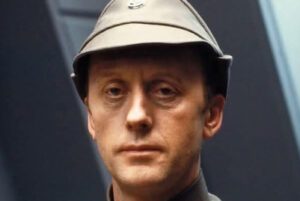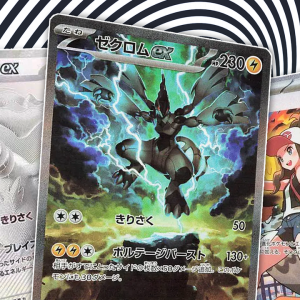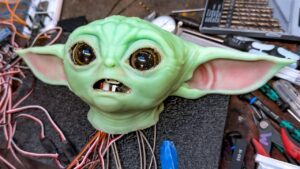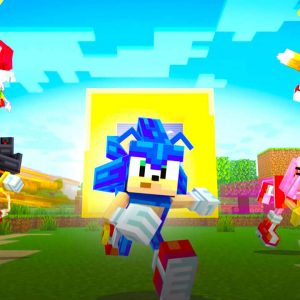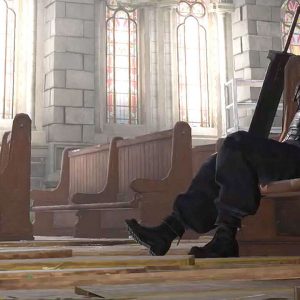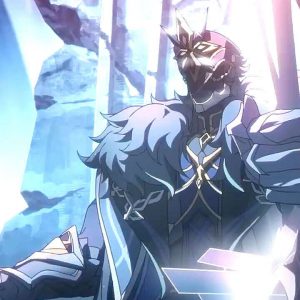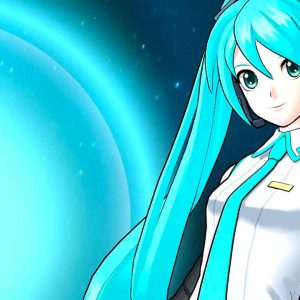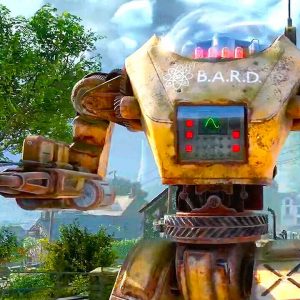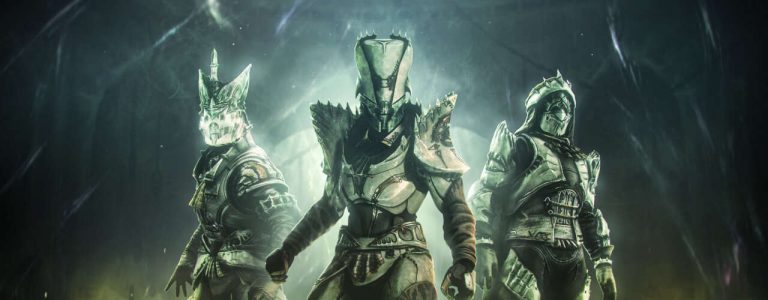
Meet the Visionaries is a StarWars.com interview series with the directors of Star Wars: Visions Volume 2, now streaming on Disney+, and next up is PunkRobot Studio’s co-founder Gabriel Osorio, the co-writer, editor, and director of In the Stars.
Underneath a smog-covered sky, two sisters, Tichina and Koten, survive on a planet ravaged by an Imperial invasion. Not long ago, they played with their mother in the beautiful waters of their home world. But when the Empire arrived, they dug their spears into the land and killed all who resisted, including the girls’ mother. “Mom became a star, everybody did,” the younger sister, Tichina, says. “Now she’s up there, looking down on us from the sky.”
These are the opening moments of “In the Stars,” a deeply moving entry in the international animated anthology series Star Wars: Visions Volume 2. The short comes from a team of creatives at the Chilean animation studio PunkRobot Studio. Pulling together top-notch artistry, and anti-colonial themes, the film is inspired by the cultures of and injustices faced by the First Nations of Patagonia, specifically the Selk’nam people. Studio co-founder Gabriel Osorio, whose previous work “Bear Story” won the Oscar for Best Animated Short Film in 2015, co-wrote, edited, and directed the film.
“Even if this was a bigger production than we are used to, we always felt this was not a commercial project. It was something that we wanted to be meaningful,” Osorio tells Starwars.com. “Yes, we are doing this because we love Star Wars. But we always wanted to be clear that we are doing this to honor our ancestors and the Selk’nam people.”
The film, which is a beautifully told narrative about two sisters reconnecting with their heritage and surviving an oppressive force, is richly textured in more ways than one. During production, the PunkRobot Studio team journeyed to Patagonia for research. “That trip really informed the aesthetic of the film we managed to convey,” Osario says. “[The film’s visual identity] is a mix of the southernmost parts of the Latin American continent and the things that I love from the original trilogy.” Osorio’s team scanned real physical backgrounds, miniatures, and objects and inserted them into the 3D animated film. One of the opening shots sees Tichina standing over a crop of glowing mushrooms. On the left-hand side of the screen, a tree is visible for a few seconds. “It is a small part of the image, but that is a real tree that we 3D scanned in Patagonia,” Osorio says. “What I love about that process of 3D scanning is that you get to bring the nature to the animation, but you don’t have to take the nature from the space. It felt that we put some essence of Patagonia in the animation.”
In the short, when the Empire invaded, Tichina and Koten’s mother hid them away and led a charge on the factory polluting their world. She came close to toppling it all before she and the rest of their people were killed by heavy blaster fire. The care taken with the depiction of this tragedy in an ultimately reverent and hopeful story is part of what has made “In the Stars” resonate with people all over the globe, specifically in Latin America. “[The film] was really meaningful for a lot of people here,” Osorio says. “It was even less than a hundred years ago that people were being systematically hunted by the Chilean state. It’s a very deep wound in the history of Chile.”
In the story, the sisters’ people believe that their ancestors become stars after they pass away. For Tichina, everyone still being there with them is a source of strength and all the more reason to fight back. “We’re not alone!” she says. But Koten is less optimistic. She notes they can no longer see the stars underneath all the pollution from the factory. The imagery of characters being connected with their culture through the stars was one of the initial seeds that carried on from early development. “Even when we didn’t know what the story was about, I really wanted to see these characters looking at their lost mother or father in the stars,” Osorio says. “That idea was what made us connect the dots of the story.”
Throughout the film, we see Tichina’s bullheaded nature contrasted with Koten’s world-weary and outwardly cold demeanor. Tichina wants to fight, constantly trying (and failing) to use the Force like their mother did to fight the Empire. Koten, on the other hand, fears losing Tichina, too, and wants them to do what they can to survive. “In some ways, Koten is the main character because she is the one that has this arc in the film,” Osorio says. “But in many ways, making this short film was about thinking about how you feel as a child. Tichina knows what she wants and tries really hard to do it. [The film] has a lot to do with going back to the naivety we have as a kid.”
Read the interview in full here.
The post Meet the Visionaries: PunkRobot Studio’s Gabriel Osorio on the Rich Textures of In the Stars appeared first on Jedi News.
